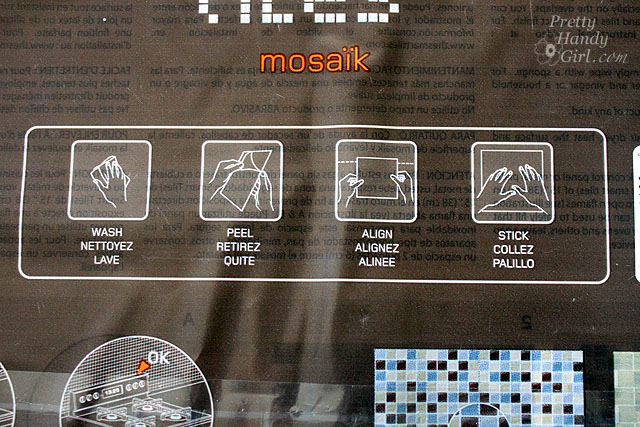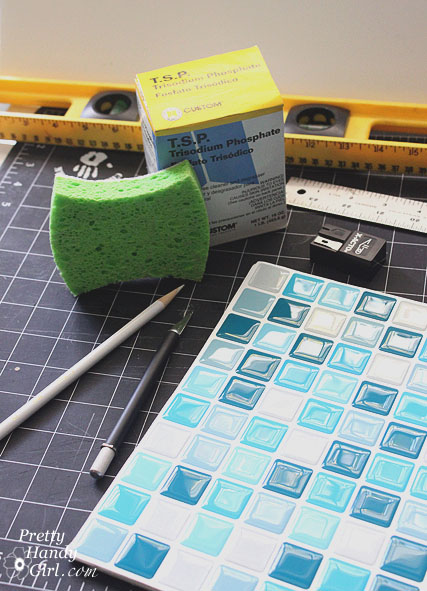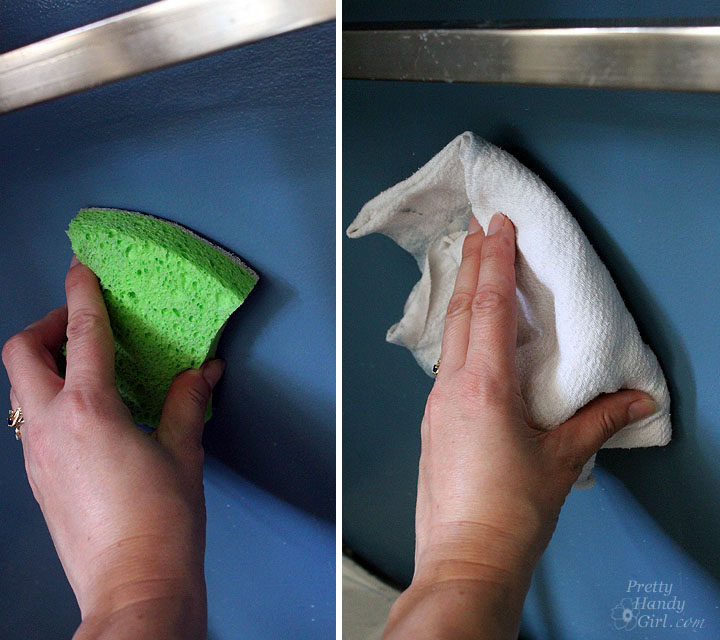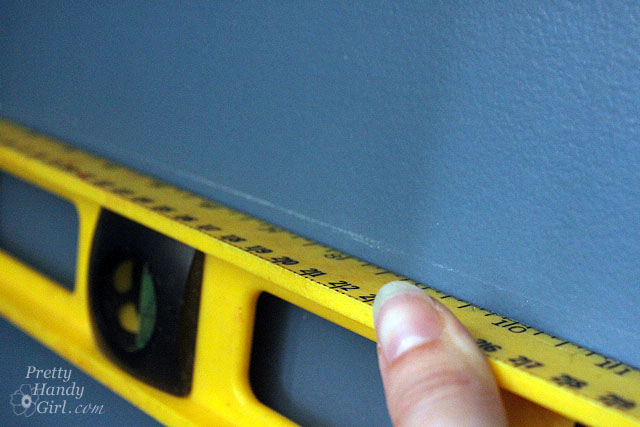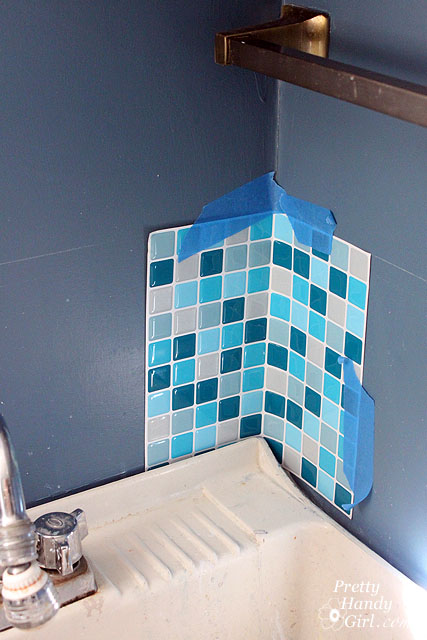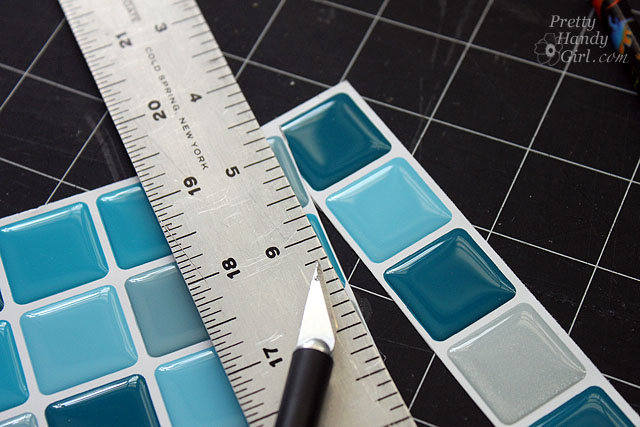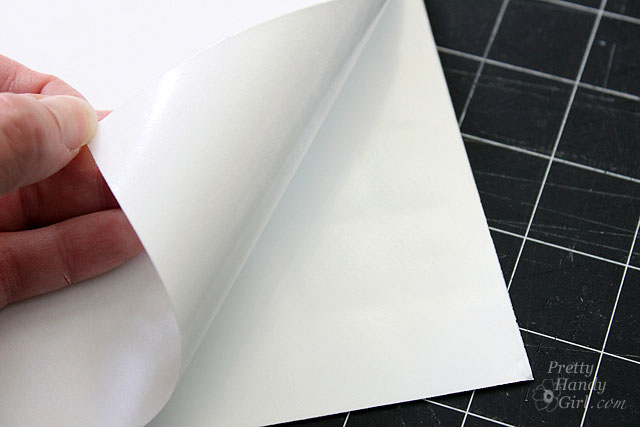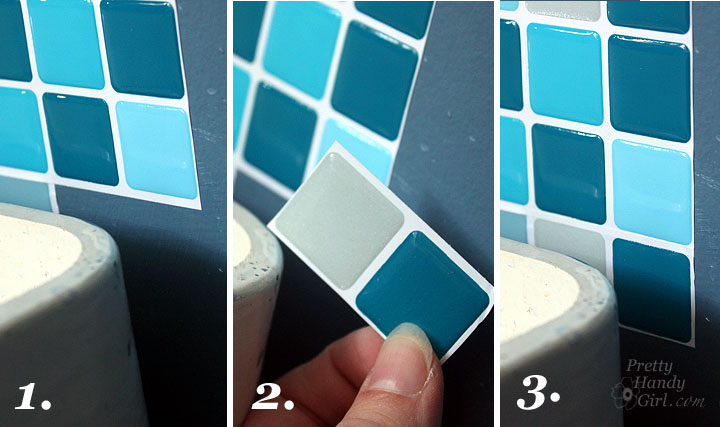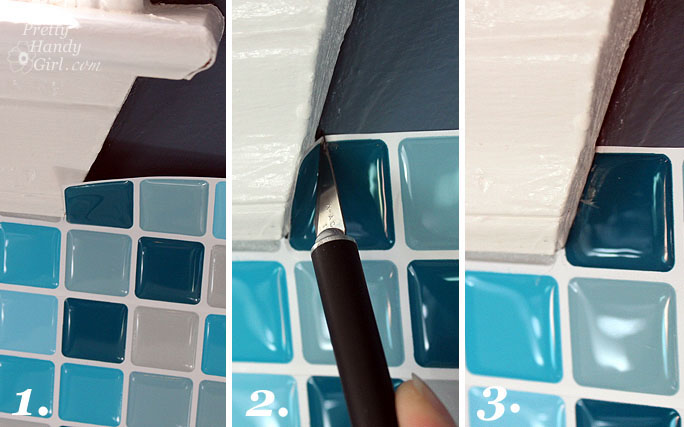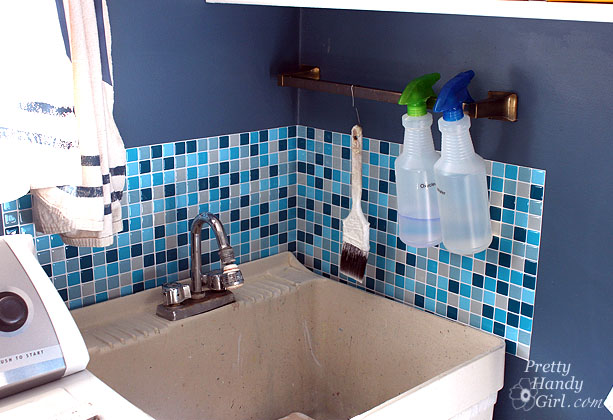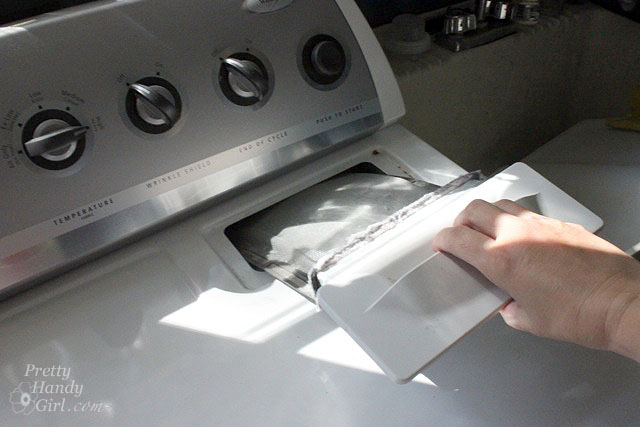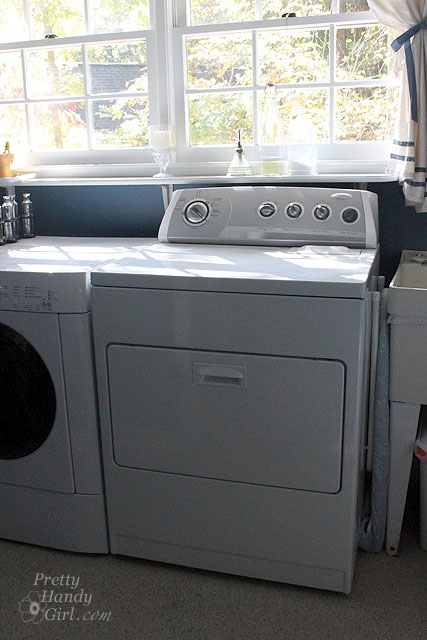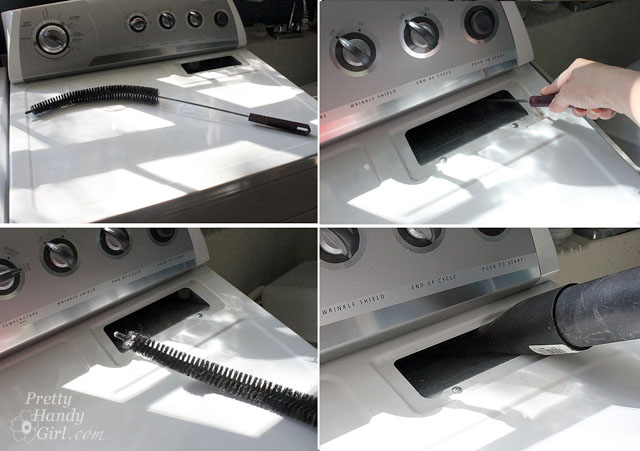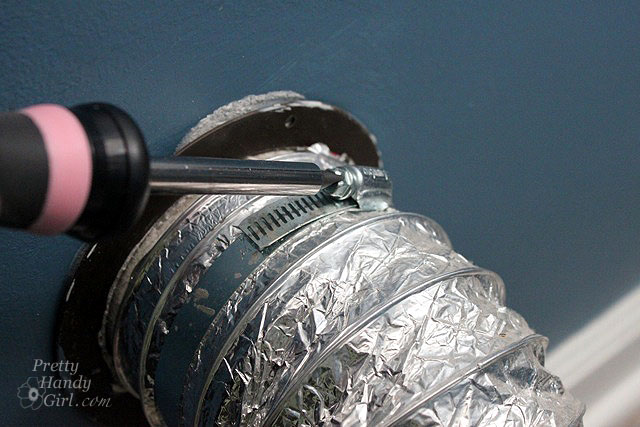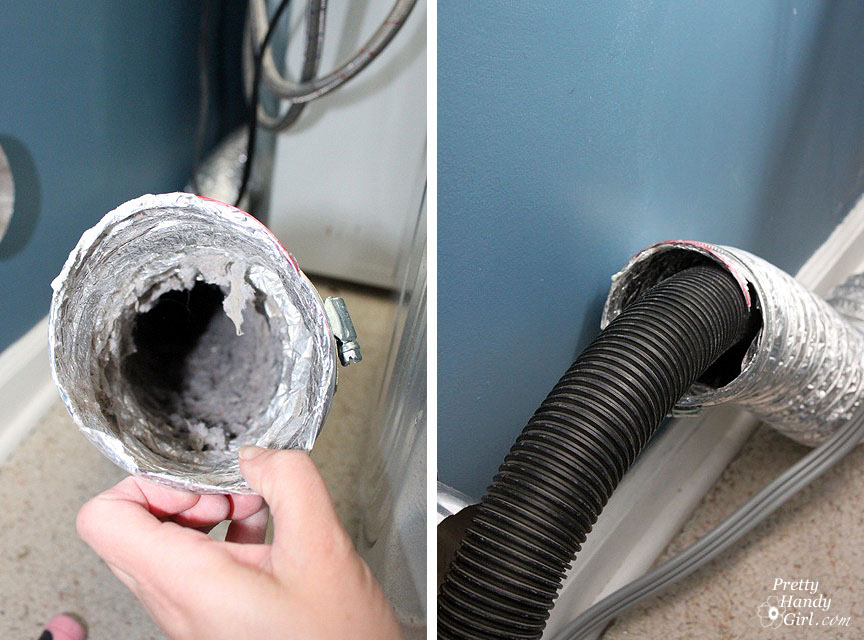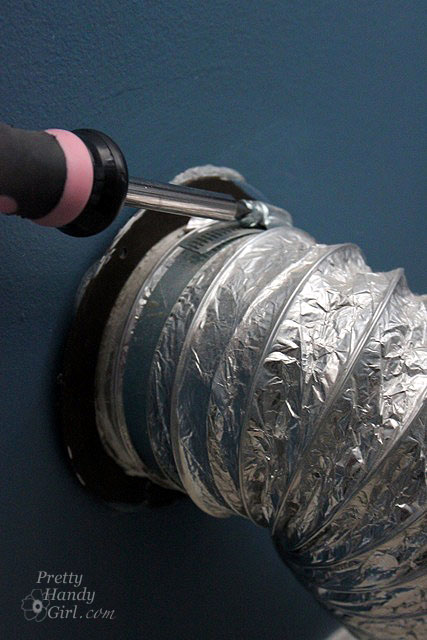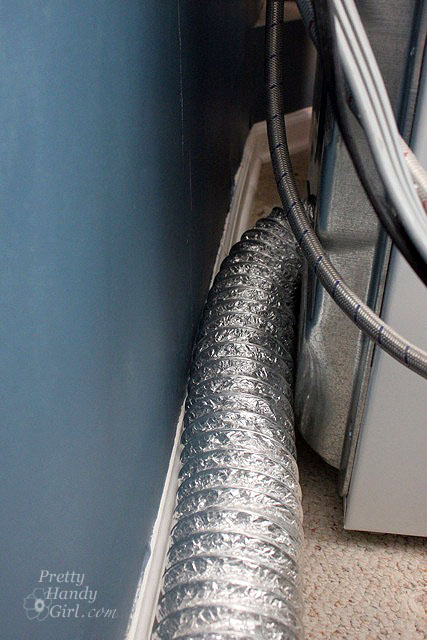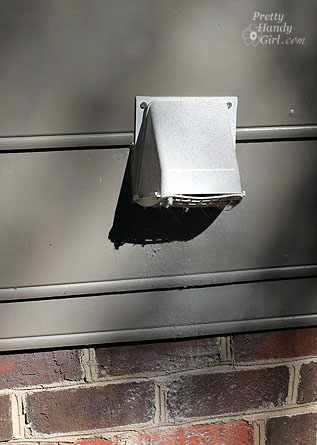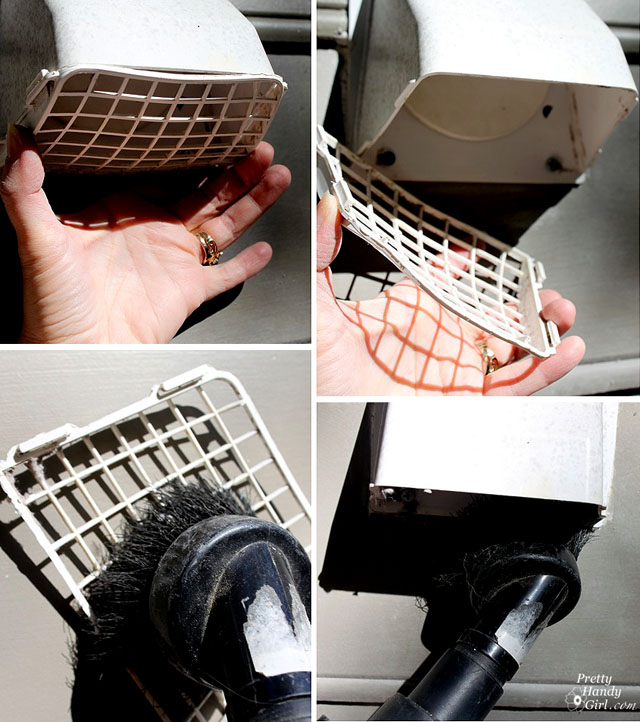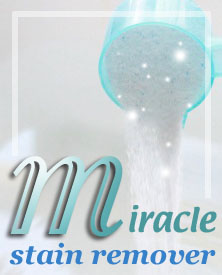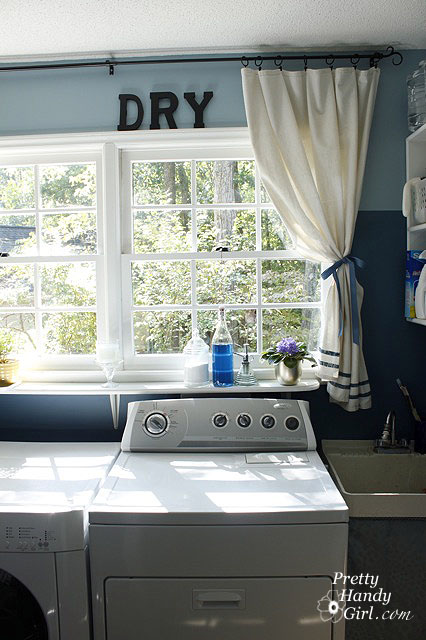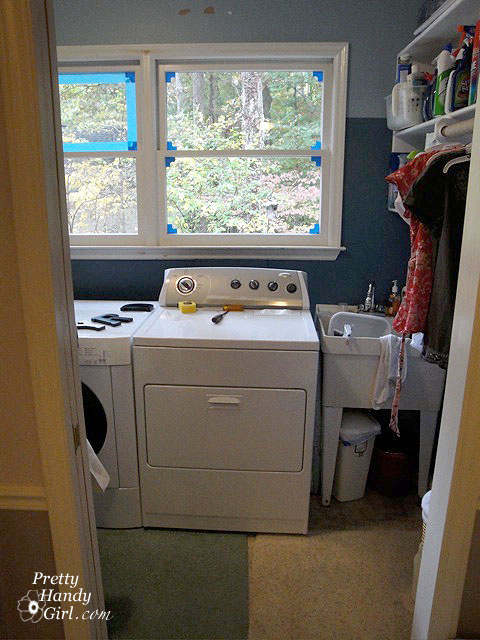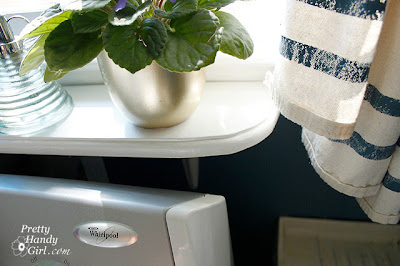The other day I was lamenting the condition of our laundry room. It was beautiful about a year ago, but continual use and lots of cleaning paint brushes had left the wall looking like this.
Since Jackson Pollock walls are not in style, I decided to give the utility sink a quick face lift. Of course glass mosaic tiles would be really fab here. But, I didn’t have the time or desire to grout the walls and tiles. Luckily I had some Smart Tiles patiently waiting for me to try them. I chose the Lagoon Mosaik tiles for my laundry room. But, there are a wide variety of colors and sizes to chose from. These self-adhesive tile sheets have the look of mosaic glass tiles but not the hassle and mess of mixing grout, laying tile, and cleaning the grout afterwards.
Installing them is a cinch. It is as simple as wash, peel, align and stick! See:
You’ll need a few materials before you start:
(I’ve included affiliate links for your convenience. I earn a small percentage from a purchase using these links. There is no additional cost to you. You can read more about affiliate links here.)
- Level
- Pencil or Chalk
- X-ACTO knife
- Cutting Mat
- Metal ruler
- TSP cleaning solution
- Sponge
- Dry Rag
- Painter’s Tape
Clean the walls according to the directions on the TSP cleaning solution box. Wipe the walls dry.
Use a level and a pencil to mark a line where the top of the smart tiles will be installed.
Dry fit all the tiles sheets. Start in the corner (if you have one.)
Tape up all the tile sheets using painter’s tape.
Cut any excess off the sheets and cut any additional tiles needed for the installation.
Peel the backing off and carefully adhere the tile sheet to the wall. Try very hard not to touch the adhesive backing.
Line the tile up with the level line.
Press firmly against the wall and smooth your hand over the sheet to remove any air bubbles.
For any holes: 1) Count tiles for the hole. 2) Cut out that many tiles. 3) Stick them on and admire how well they blend with the existing tiles.
Another reason the Smart Tiles are a breeze to install is because they are flexible, you can wrap it around an object, then mark the cut and use an X-ACTO knife to cut away any excess.
That is all there is to it! Stand back and admire your handy work!
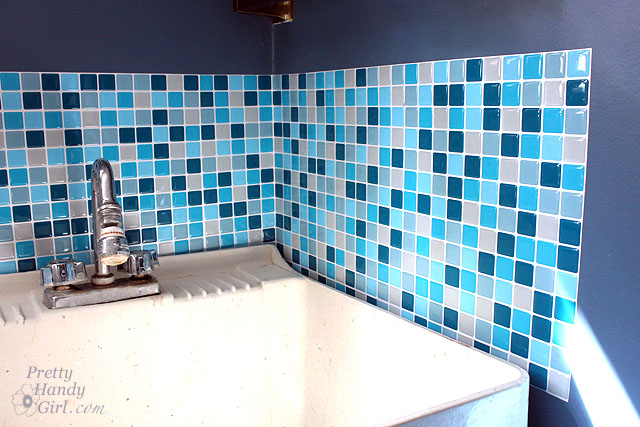
I loved the ease and simplicity of the Smart Tiles. They look real until you get up real close and notice that they are not as thick as glass tiles on the side. To fake the sides, you could fit a thin piece of molding on the sides and the top to give it a more finished look.
Although these tiles are easy to install, they cost about the same as the real thing. However, you will save money on grout. And you will definitely save time (and we all know that time is money!)
The tiles I installed have wiped off very easily and they don’t show splashes. A few of the corners have started to peel up where I wasn’t careful about not touching the adhesive backing. The rest of the seams are holding tight.
If you are looking for a quick and easy solution to update your backsplash, I highly recommend the Smart Tiles.
That being said, if you want a more permanent solution, I recommend spending about the same amount of money and take the time to install glass mosaic tiles.
Note: They cannot be installed inside a shower where the conditions are very wet. In the kitchen, if installing behind a gas range without a back panel, you need to leave a safety zone.
You can purchase them at your local Home Depot in the US, online, or at these locations.
Update: The Smart Tiles I installed eventually started to peel and didn’t look so smart. I’d recommend this for a temporary backsplash, but for a more permanent solution go ahead and tile your backsplash. It may be a little more work, but it’s not difficult to tile.


